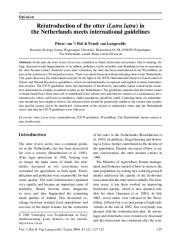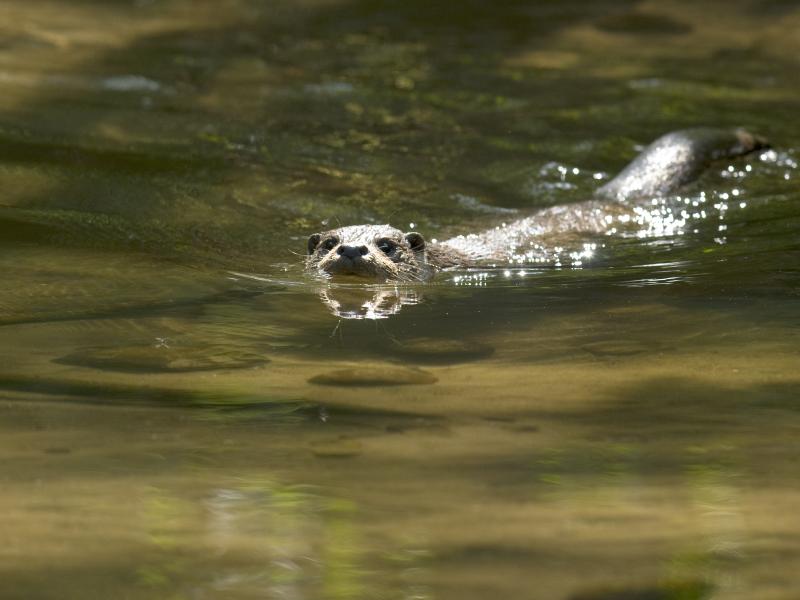Lutra 47(2)_Van 't Hof & Langevelde_opinion_2004
Reintroduction of the otter (Lutra lutra) in the Netherlands meets international guidelines
In the past, the otter (Lutra lutra) was a predator in Dutch freshwater ecosystems. Due to hunting, fishing, destruction and fragmentation of its habitat, pollution, traffic mortality and disturbances due to recreation, the otter became extinct. Fourteen years after extinction, the otter has been reintroduced in the Weerribben, an area in the northwest of Overijssel province. There was much discussion about releasing otters in the Netherlands. This paper discusses the reintroduction project in the light of the IUCN (International Union for Conservation of Nature and Natural Resources) guidelines, which are internationally recognized and applied in many reintroduction projects. The IUCN guidelines stress the importance of biodiversity and public nature conservation awareness (important in a highly populated country as the Netherlands). The guidelines stipulate that the former causes of death should have been removed or minimised in the release area and that the chances of a spontaneous recolonisation by otters, sufficient to establish a viable population, should be small. Capturing otters for reintroduction should not have negative effects, the released otters should be genetically similar to the extinct otter population and the project has to be monitored. Assessment of the project to reintroduce otters into the Netherlands shows that that the IUCN guidelines were followed.

